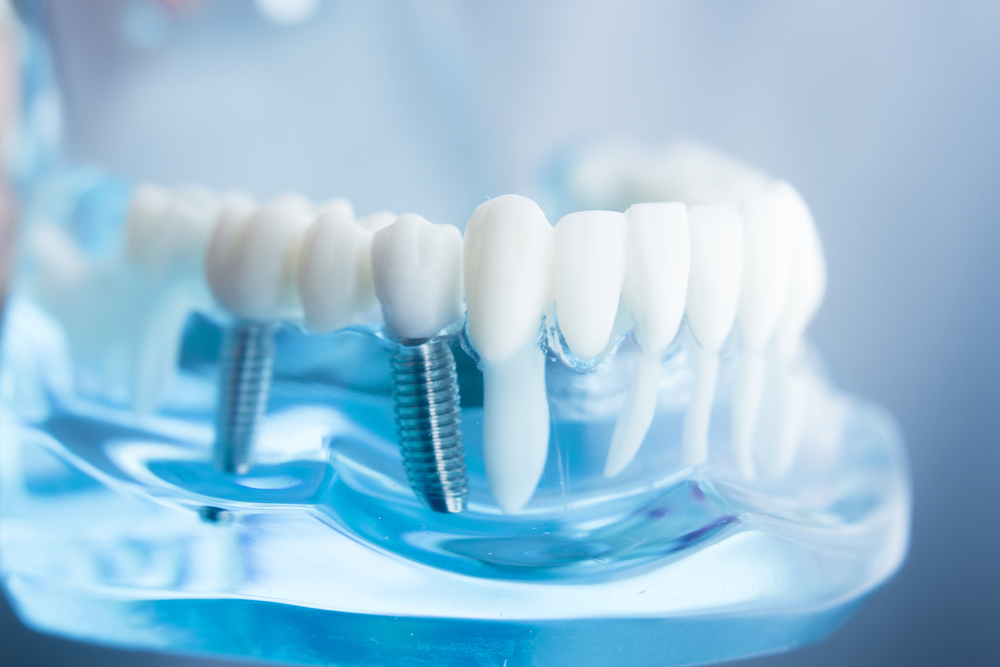What Is Surgical Orthodontics?
What Happens When You Don’t Practice Good Oral Care
May 12, 2017Why Both Dental and Orthodontic Care Are Important
May 30, 2017
Surgical orthodontics? What’s that? When you think of orthodontics, do you ever think of surgery? Probably not. Orthodontics is a practice that not only deals with straightening the teeth, but also providing the most optimal oral health possible through correcting problems with the jaw and bite. Surgical orthodontics is also known as orthognathic surgery, which is a correction of the jaw. We provide this procedure to improve functionality, but most of our patients also go away with an enhanced appearance as well. Having a proper bite and jaw function will make orthodontic straightening that much easier, not to mention improve the way you experience daily life. Not all dentists are skilled in corrective jaw surgery, but Dr. Hardy is highly trained to perform orthodontic care alongside surgical orthodontics to transform your smile. If you have a misaligned jaw or any of the problems we mentioned, schedule your free consultation with Dr. Hardy today. Let us give you the amazing smile you deserve!
What Surgical Orthodontics Focuses On
Surgical orthodontics is a series of procedures meant to correct jaw bone abnormalities, bad bites, malocclusion and improve facial aesthetics. A healthy mouth should have no abnormalities with your bite. Your teeth should be aligned properly so they grow correctly and have optimal functionality. According to the Oral and Maxillofacial Surgeons blog, surgical orthodontics is needed for a myriad of reasons including:
- Malocclusion – The upper teeth should fit slightly over the lower teeth in order to protect the tongue and prevent you from biting your cheeks or irritating other soft tissues of the mouth. Teeth shape or missing teeth in the mouth can create malocclusion (or the misalignment of the teeth) as well as extra teeth, dental appliances, tumors, fractures and injuries. The misalignment can easily be corrected with surgical orthodontics.
- Problems with Bite – Common problems with bite include openbite, crossbite, overbite and underbite. With openbite, the upper and lower front teeth don’t overlap. With crossbite, the jaw may grow misaligned and cause problems with the teeth as the upper teeth sit inside the lower teeth. With overbite, the upper teeth extend out over the lower teeth. Underbite is when the lower jaw extends out and the lower teeth rest in front of the upper teeth.
- Unbalanced Facial Appearance – This could stem from a facial injury or be present at birth. In some patients, the facial bones are misaligned, causing the jawbones to also be misaligned. This causes an unbalanced facial appearance. Surgery is usually needed to correct alignment and restore correct function to the jaw for chewing, speaking and everyday activity.
- Facial Injury – Surgical orthodontics is used to correct misalignment of the jaw through injuries and accidents so that the jaw can heal into proper alignment. Work is usually done on the teeth as well via dental implants to correct teeth appearance from injuries.
- Protruding Jaw – The upper or lower jaw (usually the upper jaw) protrudes very far forward, which can lead to speech problems as well as difficulty chewing.
- Birth Defects – This is similar to unbalanced facial appearances. Surgical orthodontics is usually used to correct cleft lip and palate, in which parts of the upper lip or mouth remain split at birth. The same can happen to the roof of the mouth (the palate). These problems must be fixed with surgery.
- Chronic TMJ – TMJ has to do with your temporomandibular joint, which is the hinge that connect your jaw to your skull. TMJ is actually TMD, or temporormandibular disorder. This usually stems from injury to the jaw, grinding or clenching the teeth, arthritis, stress and movement of the cartilage in the joint. It can be treated with surgery if retainers and mouth appliances do not correct the problem.
- Sleep Apnea – We bet you didn’t know that sleep apnea can be treated with orthodontic care. We generally provide different types of retainers for mild sleep apnea cases, but in severe cases, surgical orthodontics is needed to fix the jaw and protect the health of the patient.
Surgical orthodontic treatment usually occurs after the adult jaw is fully formed, which typically is at age 18 or older for boys or 16 and older for girls. Some surgical orthodontic treatments may take several years to complete, but the results will last a lifetime and give you a better quality of life. Surgical orthodontics can greatly enhance appearance and how a person talks, chews and converses as well as giving them a lower risk for tooth decay that comes with misalignment of the teeth and the jaw.
Our corrective jaw surgery will move your jaw back into position so that your teeth align correctly and you no longer struggle with common everyday tasks. Don’t let another day go by without proper jaw function. To schedule your life-changing appointment with us, simply call Hardy Pediatric Dentistry and Orthodontics at (720) 887-6003!